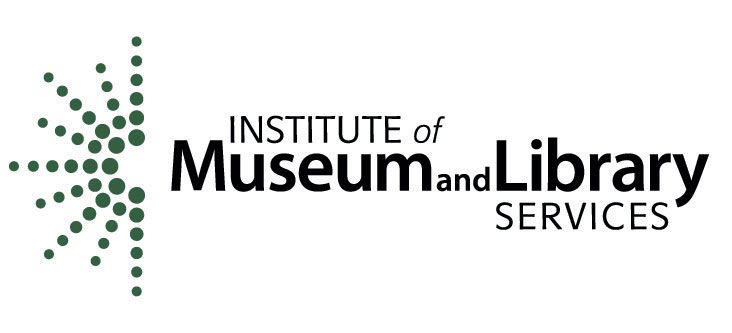

Aim for Excellence
With Information from Medical Librarians
Improve the metrics you care about: your patients’ experience, the health of your community, and the per-person costs of healthcare.
Research demonstrates that librarian-led information services significantly contribute to your institution's mission.
PROVIDE BETTER CARE WITH INFORMATION FROM MEDICAL LIBRARIANS
Notable Research Data (see below for full references and links to studies)
- 39% of users of clinical librarian services reported a positive impact on quality of patient care; plus
- 45% reported that services ensured that interventions were based on best practice or current evidence;
- 25% reported improvement in patient and staff safety; and
- 16% reported reduced referral, tests, and readmissions. (Brettle, A, et.al., 2016)
- 86% of post-study participants surveyed rated their level of satisfaction with the just-in-time information service as having a positive impact on the care they provided to their patients (McGowan, J, et. al, 2008)
- 75% said that they definitely or probably handled patient care differently using information obtained through the library (Marshall, JG, et. al., 2014)
- 88% of respondents on the intervention team reported changing a treatment based on new information skills taught by a librarian, and 79% changed a treatment plan based on a search done by the librarian (Aitken, EM, et.al, 2011)
![]()
MAKE BETTER DECISIONS WITH INFORMATION FROM MEDICAL LIBRARIANS
Notable Research Data
- In one Veterans Administration (VA) study (8 hospitals) where clinical searches were conducted by librarians, health professionals said about search results:
- 95%—useful to direct patient care;
- 89%—reinforced a mode of treatment;
- 49%—influenced the advice to patient and family;
- 49%—altered the mode of treatment;
- 30%—influenced the choice of treatment;
- 30%—affected the choice of drugs;
- 16%—affected the choice of tests; and

- 14%—influenced the diagnosis. (Jemison, K, et. al., 2009)
- A study in 118 hospitals with more than 16,122 participants found that
- 95% reported that information provided by a librarian resulted in better informed clinical decisions
- 48% changed advice given to a patient;
- 33% changed the choice of drugs;
- 25% changed a diagnosis;
- 23% changed the choice of tests; and
- 12% changed post-hospital care or treatment as a result of using resources and services provided by librarians or the library (Marshall, JG, et. al., 2013)
- A systematic review of 28 studies demonstrated a range of impacts including:
- 37-97% impact on patient care;
- 10-31% impact on diagnosis;
- 20-51% change in choice of tests; and
- 27-45% change in choice of therapy (Weightman, AL, et.al., 2005)
![]()
AVOID ADVERSE EVENTS WITH INFORMATION FROM MEDICAL LIBRARIANS
Notable Research Data
- In a large study across more than 110 hospitals:
- 13% avoided misdiagnosis and adverse drug reactions;
- 12% reduced medication errors;
- 6% avoided patient mortality (Marshall, JG, et.al., 2013)
- Health care professionals reported benefits as a result of information from search requests in 8 Veterans Administration hospitals:
- 3% avoided adverse events or complications, while
- 8% avoided patient mortality (Jemison, K, et. al., 2009)
![]()
SAVE COSTS AND TIME; REDUCE LENGTH OF STAY WITH INFORMATION FROM MEDICAL LIBRARIANS
Notable Research Data
- Librarian contributions to morning reports led to
- a decrease in hospital length of stay of 2 days per case; and
- median
 hospital charges were reduced by $3,618 per case (Banks, DE., et. al., 2007)
hospital charges were reduced by $3,618 per case (Banks, DE., et. al., 2007) - 85% of respondents reported that information provided by a librarian or through services provided by the library saved them time
- average time saved was 2.5 hours per person per case (Marshall, JG, et. al. 2013)
- 12% reported cost savings through reduced hospital length of stay (Brettle, A, et. al, 2016)
- A systematic review of 28 studies indicated a 10-19% reduction in length of patient stay (Weightman, AL, et.al., 2005)
- Librarians locate information more quickly and less expensively than clinicians, freeing up healthcare providers’ time so they could focus on patient care.
- On average, librarians provided responses to questions 6.61 minutes more quickly than health professionals;
- the average salary savings per search was $13.60 minimum for librarian searches. (McGowan, J, et. al, 2008)
![]()
CITED RESEARCH
Aitken, EM, Powelson, SE, Reaume, RD, & Ghali, WA (2011). Involving clinical librarians at the point of care: results of a controlled intervention (full text). Academic Medicine, 86(12), 1508-1512.
DOI: 10.1097/ACM.0b013e31823595cd
Banks, DE, Shi, R, Timm, DF, Christopher, KA, Duggar, DC, Comegys, M, & McLarty, J (2007). Decreased hospital length of stay associated with presentation of cases at morning report with librarian support (full text). Journal of the Medical Library Association, 95(4), 381-387.
DOI: 10.3163/1536-5050.95.4.381
Brettle, A., Maden, M. and Payne, C. (2016), The impact of clinical librarian services on patients and health care organizations (full text). Health Information and Libraries Journal, 33: 100–120.
DOI: 10.1111/hir.12136
Jemison, K, Poletti, E, Schneider, J, Clark, N, Stone, RD (2009), Measuring Return on Investment in VA Libraries (abstract). Journal of Hospital Librarianship, 9:379-390.
DOI: 10.1080/15323260903253803
Luther, J (2008). University investment in the library: What’s the return?:A case study at the University of Illinois at Urbana–Champaign (UIUC).
Marshall, JG, Morgan, JC, Thompson, CA, Wells, AL, (2014), Library and information services: impact on patient care quality (abstract; see your medical librarian for full article). International Journal of Health Care Quality Assurance, Vol. 27(8):672 – 683
DOI: 10.1108/IJHCQA-10-2013-0119
Marshall JG, Sollenberger J, Easterby-Gannett S, et al. The value of library and information services in patient care: results of a multisite study (full text). Journal of the Medical Library Association,101(1):38-46.
DOI: 10.3163/1536-5050.101.1.007
McGowan, J, Hogg, W, Campbell, C, & Rowan, M (2008), Just-in-time information improved decision-making in primary care: a randomized controlled trial (full text). PLoS One, 3(11), e3785.
DOI: 10.1371/journal.pone.0003785
Tenopir, C (2010). Measuring the Value of the Academic Library: Return on Investment and Other Value Measures (full text). The Serials Librarian, 58:39-48.
DOI: 10.1080/03615261003623005
![]()


